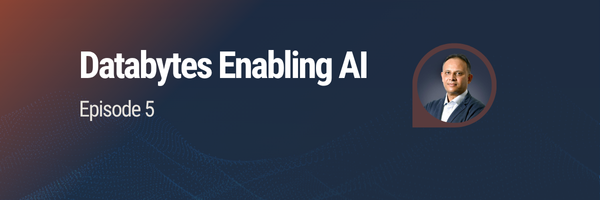You’ve wasted enough time and money on strategies that start with lofty visions, expensive mobilization, and execution traps while competitors lap you and technology leaves you behind.
The traditional top-down approach to enterprise AI transformation is broken. Not because the vision is wrong, but because it ignores how real organizational change actually happens.
At Prowess Consulting, we’ve pioneered a radically different approach: start at the bottom, win quickly, and let the transformation spread organically. Rather than beginning with comprehensive strategies and massive projects, we focus on solving the annoying, repetitive tasks that burden individual knowledge workers.
The results? Cultural transformation that goes viral, spreading from individuals to teams to divisions, eventually reshaping the entire enterprise. And in a technology landscape evolving this rapidly, these quick wins don’t just save time, they inform how to solve bigger problems as AI capabilities mature.
By reading this post, you’ll gain a clear, actionable framework for implementing agentic AI that delivers rapid wins. You’ll see how starting with frontline pain points, rather than C-suite vision, accelerates adoption and surfaces real process improvements while building a culture ready for larger transformation. The approach we outline here can help you avoid costly missteps and position your organization to capitalize on AI’s evolving potential.
The Hidden Cost of Busywork
The case for starting with individual tasks isn’t just tactical. It’s existential. Workers spend only 4-5 hours daily on their core job functions, with 60% of their day consumed by coordination work, which leaves only 13% for strategic planning. When people spend more time moving data between systems and fixing errors than doing the work they were hired to do, you don’t just have a productivity problem, you have an organizational intelligence problem.
Stage 1: Empower Knowledge Workers to Build Their Own Solutions
Our approach begins where the pain lives: routine administrative tasks like expense management, travel coordination, invoice processing, sales compensation, and compliance workflows. These aren’t strategic initiatives. They’re daily irritants that slowly drain organizational capacity.
The breakthrough comes from empowering knowledge workers to build and manage their own agents. We help them create that first agent from scratch, using it as hands-on training for understanding how agentic AI fundamentally differs from traditional software.
When someone experiences firsthand how an agent can reclaim hours of their week, two things happen simultaneously: they build more agents, and they evangelize to teammates.
This isn’t theoretical. Workers who eliminate busywork become more productive and regain a sense of control over their work. That emotional shift is the catalyst for viral adoption. People show and tell. Teammates see the results and start building their own agents. Cultural transformation doesn’t require change management consultants; it requires proof that the technology works and permission to use it.
Cultural transformation doesn’t require change management consultants; it requires proof that the technology works and permission to use it.
Stage 2: Scale Across Teams and Rethink Processes
As individual adoption spreads, something unexpected happens: agents begin working across multiple business systems and teams. This is where tactical wins inform strategic transformation. The learning from hundreds of small experiments reveals which processes are truly broken and which can be reimagined with agentic automation.
At this stage, teams start reforming business processes based on what their agents have taught them. Instead of redesigning workflows in conference rooms, they’re redesigning them based on actual agent performance. This bottom-up intelligence is impossible to replicate through traditional strategy exercises.
Stage 3: Make Enterprise Decisions with Real Data
Here’s where the strategic payoff becomes undeniable. Most C-suite leaders can’t insightfully see isolated systems where organization-critical data lives siloed in business units. Despite containing essential information, these processes never factor into organizational direction or health. They’re just anomalies. “Why is support still bogged down when we’ve added three new people?” The answer is invisible because the data is trapped.
Bottom-up AI transformation provides a pathway to pull these disparate processes into the core organizational machine. Instead of operating as disconnected limbs outside the organism, they integrate with central systems and data stores. Over time, this means you can effect meaningful transformation because the scope of what you can actually see—both organizational data and organizational process—now includes previous blind spots.
You’re no longer measuring KPIs and planning growth in isolation from real stress points. Now, you have the data to identify those problem areas and the start of a solution: a technology that enables organic adoption without disrupting your existing infrastructure or policies.
Why Speed Matters in an Evolving Landscape
Traditional strategies assume stable technology platforms where multi-year transformations can be planned. Agentic AI doesn’t work that way. The technology is maturing quickly, and your strategy needs to adapt just as quickly.
Agentic AI technology is changing so fast that achieving quick wins with simple solutions isn’t just good practice, it’s strategic survival. Each small agent deployment teaches you what works with today’s AI capabilities, so when those capabilities dramatically improve, you’ll know exactly which bigger problems to tackle because you’ve already tested the fundamentals.
Build Culture Before Building Systems
Enterprise adoption that is built on an established culture and informed by people’s actual experience succeeds where top-down mandates fail. When your organization reaches the point of consolidating or eliminating systems, teams are driving change instead of resisting it. They’re ready to adopt it because they’ve been adopting it all along, one annoying task at a time.
The consolidation phase becomes an informed conversation about smart enterprise solutions rather than an imposed transition. Your people have already built the agentic culture. Now you’re just giving them better tools.
Start where the pain is. Win quickly. Let it spread. That’s not just a better way to adopt agentic AI, it’s the only way that actually works.
Interested in Learning More?
- Watch our Agentic AI foundational series to learn how you can apply this in real time.
- Read our blog to gain a framework for “dialing in” agentic AI.
- Hear from our CEO why our newest video series is designed to bring immediate, applicable value to your organization.
- Reach out to Julian with any additional questions!
- Read more about our Agentic AI solutions.

Aaron Suzuki
Related Posts

Episode 5: From Corner Shop to Cloud: How AI Can Elevate the Future of SMBs
Monica French and Abbas Merchant discuss how AI empowers SMBs to work smarter, scale faster, and stay competitive in a rapidly changing digital world.

How to Navigate the Agentic AI Teammate Trap
Most agentic AI fails because teams treat agents like “digital teammates.” Prowess shows how human-led, agent-amplified models—with clear governance—unlock real value and re-humanize work.

A Framework for Dialing In Agentic AI
As AI autonomy grows, six “agency dials” help organizations preserve human judgment and ethical control while turning guardrails into a strategic advantage.
